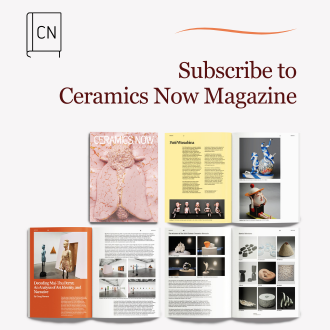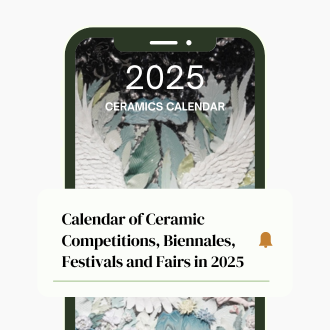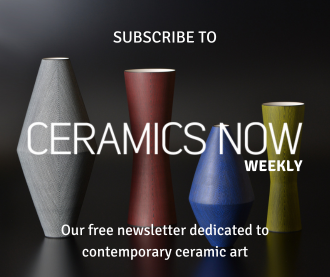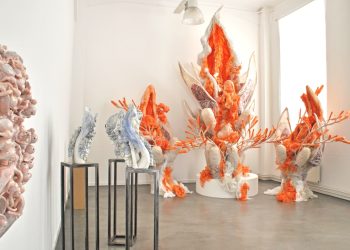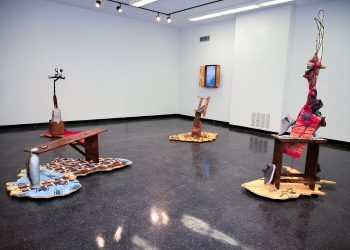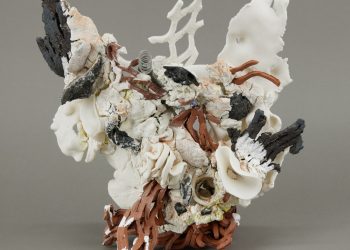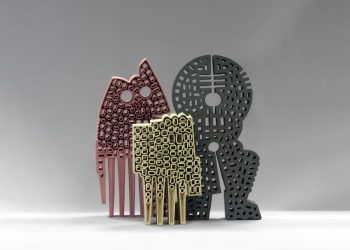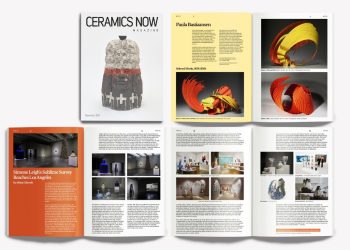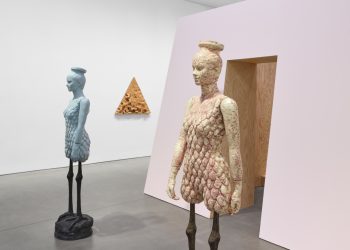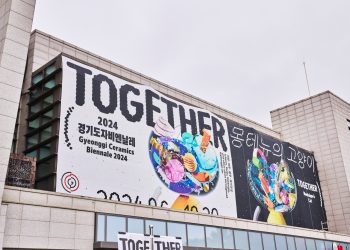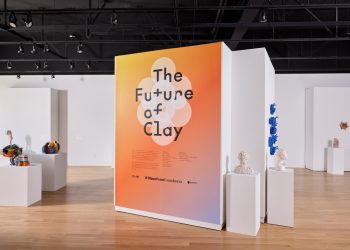Viktória Maróti is a ceramic artist who lives and works in Budapest, Hungary. She received her Master’s degree in 2018 from the Moholy-Nagy University of Art and Design, Budapest. Between 2016 and 2017, she studied with an Erasmus scholarship at Burg Giebichenstein University of Art and Design Halle in Art Campus, Germany. Currently, she is a student at the Doctoral School of Music and Visual Arts in Pécs.
Her works have been shown in several national and international solo and group exhibitions and competitions. Outstanding events included Modern Arachne (solo exhibition) at the Galerie de l’Ancienne Poste, France, in 2023; VISIONS – The CAA (Ceramic Art Andenne) thematic exhibition at the Andenne Cultural Centre, Belgium, in 2022; XIV. International Biennial of Artistic Ceramics of Aveiro, Portugal in 2021.
She has participated in residency programs and symposia for international artists since 2018. In 2023, the 35th International Ceramics Symposium in Lučenec-Kalinovo, Slovakia; in 2022, the Kaunas Bone China Symposium in Kaunas, Lithuania, and Ceramics Exchange Tandem: Künstlerhaus Stadttöpferei Neumünster, Germany.
Viktória has received several prestigious awards, including the 1st Prize at the National Ceramic Art Triennial in Hungary, the Jury Prize at the Blanc De Chine—International Ceramic Art Award Competition in China, and the 1st Prize at the Concours Jeune Céramique Européenne in France.
Visit Viktória Maróti’s website and Instagram page.
Featured work
Selected works, 2019-2024


My work focuses on combining textiles and ceramics to create sensory illusions. My objects challenge and push the boundaries of the materials. The working process is interdisciplinary, i.e., it belongs to both textile and ceramic arts. My creations emerge from the symbiosis of materials. During the working process, they form a unit, but after the high-temperature firing, they burn out, and the porcelain retains its memory.
Is porcelain capable of a transformation that evokes the imitation of another medium? My works are constructed through an experimental, rethought-weaving technique. This makes it possible to create structures that contradict the character of porcelain. The use of several media simultaneously results in hybrid objects that visually deceive the senses. The viewer discovers material that does not seem to be what he/she expected. The aim of my work is to operate without the stereotypes of the material and to open up new dimensions of perception.
Between 2015 and 2018, I mainly experimented to discover the techniques that I have recently applied in my work. In 2018, I started making my first series of porcelain objects called the woven-dissolve series. I built my structures in cylindrical shapes that deformed during the high-temperature firing. I made a conscious manipulation with external influences that caused an intense transformation in the forms. I see the woven-dissolve series as an analogy of deformation.
Since 2019, I have been working on a series called Shelter. I use cone shapes with a central, organic, and geometric base. The colors are mostly homogeneous, but I also like to use contrasting colors at the same time. The pieces in the shelter series evoke a nest or a basket. Because of their shape, they symbolize protection and keeping something safe.
Since 2021 I have been making wall objects parallel to the shelter series, experimenting in the hope of finding new fields. Some of my wall objects complete a composition with other pieces and create spatial illusions. I also strive for monumentality in some of my work by using more modular elements. In my latest wall pieces I play with colours or the density of patterns. The titles invite the viewer to look for something in the repetitive reliefs.
I created the Woman of the Dunes series in 2023 at an international ceramics symposium held in a brickworks in Kalinovo, Slovakia. I worked with the other participating artists in the factory area, which was a really inspiring environment to open up creative energies. The series is inspired by a novel by Japanese author Kobo Abe. The structures are built in the sand to symbolize sinking objects. The elemental force of the sand has a devastating effect on the existence of the people who live in the structures.


